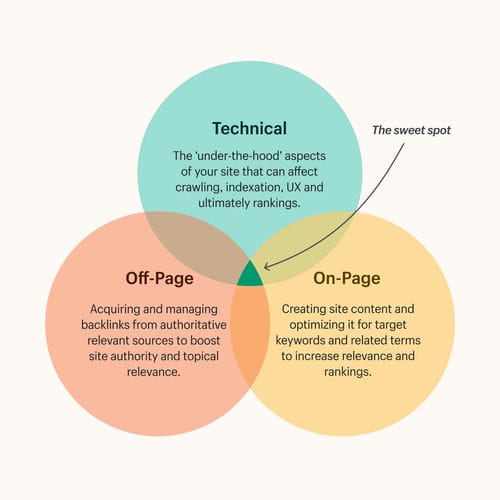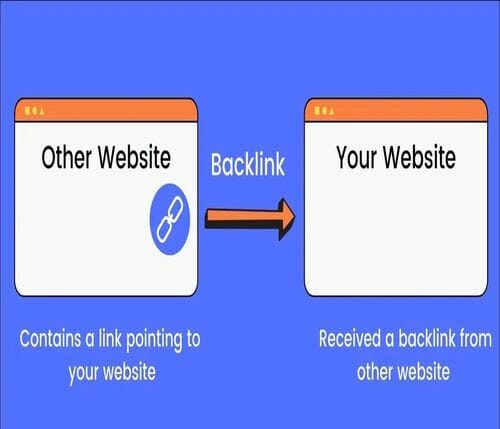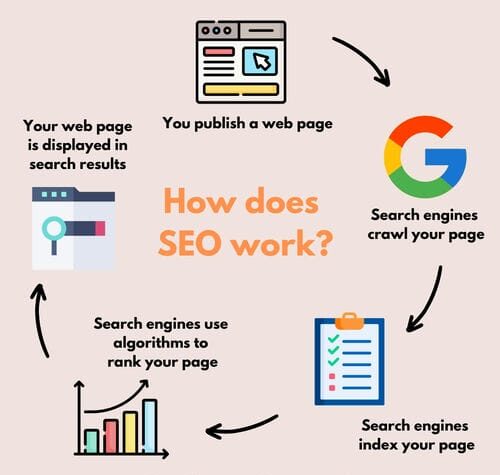Are you seeking to enhance your online presence and elevate your website’s ranking on search engine results pages? You may wonder how to improve search engine optimization?
In today’s digital landscape, mastering Search Engine Optimization (SEO) is paramount for achieving sustained success. This comprehensive guide is specifically created to equip you with the requisite knowledge and strategies to optimize your website effectively.
In the fast-paced world of digital marketing, mastering search engine optimization (SEO) is crucial. With algorithms changing frequently and competition growing fiercer, staying ahead is key.
This guide covers everything from SEO basics to advanced strategies. From detailed keyword research to optimizing on-page elements and building reputable backlinks, each section equips you with actionable insights and techniques.
Stay informed, adapt to changes, and implement these strategies to enhance your SEO efforts and achieve success in the ever-evolving digital landscape.
Let’s dive in and unlock the secrets to optimizing your online presence effectively.
How to Improve Search Engine Optimization?
Search Engine Optimization (SEO) is the practice of optimizing websites to enhance their visibility and ranking on Search Engine Results Pages (SERPs). It involves various strategies and techniques aimed at improving organic traffic and attracting relevant visitors to a website.
2. On-Page vs. Off-Page SEO
On-page SEO refers to optimizing elements within a website, such as content, HTML source code, and site structure, to improve its search engine ranking. Off-page SEO, on the other hand, involves activities conducted outside the website to increase its authority and credibility, such as link building and social media engagement.
3. Importance of Search Engines
Search engines play a pivotal role in directing online traffic by serving as gateways to information. Understanding how search engines work and what factors influence their ranking algorithms is essential for optimizing websites effectively and gaining visibility in a crowded digital landscape.

Keyword Research
1. Importance of Keyword Research
Keyword research forms the bedrock of any successful SEO strategy. By identifying the terms and phrases users input into search engines, businesses can tailor their content to match user intent effectively. This ensures that their website appears prominently in relevant search results, driving targeted organic traffic.
2. Tools for Keyword Research
Various tools are available to aid in keyword research, including Google Keyword Planner, Ahrefs, and SEMrush. These tools provide valuable insights into search volume, competition levels, and related keywords, enabling businesses to refine their keyword targeting strategy.
3. Steps for Effective Keyword Research
- Identifying Seed Keywords: Start with broad terms relevant to your industry or niche.
- Analyzing Search Volume and Competition: Evaluate the popularity and competitiveness of selected keywords.
- Finding Long-Tail Keywords: Target more specific, longer phrases that align with user intent and have lower competition.
- Integrating Keywords Naturally: Incorporate chosen keywords seamlessly into website content to enhance relevance and improve search engine ranking.
By mastering the art of keyword research, businesses can lay a solid foundation for their SEO efforts and ensure that their content resonates with their target audience, driving organic traffic and achieving their digital marketing objectives.

On-Page SEO Optimization
1. Titles and Meta Descriptions
Effective title tags and meta descriptions are crucial for convincing users to click through to your website from search engine results pages (SERPs). Craft titles that accurately reflect the content of the page while incorporating relevant keywords.
Similarly, write compelling meta descriptions that provide a concise summary of the page’s content, encouraging users to click through.
2. Structuring Content with Header Tags
Utilizing header tags (H1, H2, H3) not only helps structure your content for readability but also signals to search engines the hierarchy and importance of the information. Ensure that header tags are used logically and include relevant keywords to improve search engine visibility.
3. Prioritizing Content Quality and Relevance
High-quality, relevant content is paramount for engaging users and satisfying search engine algorithms. Create content that addresses the needs and interests of your target audience while incorporating relevant keywords naturally. Regularly update and refresh content to ensure its accuracy and relevance.
4. Optimizing URL Structure
An SEO-friendly URL structure not only improves user experience but also enhances search engine crawling and indexing. Create concise, descriptive URLs that reflect the content of the page and include relevant keywords where appropriate. Avoid long, complex URLs that may confuse users and search engines alike.
5. Use of Internal Linking
Internal linking plays a crucial role in distributing link equity throughout your website and guiding users to relevant content. Incorporate internal links strategically within your content to establish connections between related pages and improve website navigation. Ensure that anchor text is descriptive and includes relevant keywords.
6. Enhancing Image Optimization
Optimizing images for search engines involves more than just adding descriptive filenames and alt text. Compress images to reduce page load times, improving user experience and search engine rankings.
Additionally, utilize descriptive alt text that accurately describes the image and includes relevant keywords where appropriate.
By implementing these on-page SEO optimization techniques, businesses can enhance their website’s visibility and accessibility to both users and search engines. These strategies lay the foundation for a well-optimized website that effectively attracts organic traffic and achieves digital marketing objectives.
Technical SEO
1. Improving Website Speed and Performance
Website speed and performance are critical factors that directly impact user experience and search engine rankings. Slow-loading websites lead to higher bounce rates and lower user engagement, adversely affecting SEO.
Employ tools such as Google PageSpeed Insights to identify and rectify performance issues, such as large image files or inefficient code.
2. Ensuring Mobile-Friendliness
With the proliferation of mobile devices, ensuring that your website is mobile-friendly is essential for SEO success. Google prioritizes mobile-friendly websites in its search results, making mobile optimization a non-negotiable aspect of technical SEO.
Test your website’s mobile usability using tools like Google’s Mobile-Friendly Test and address any issues to enhance user experience and improve search engine visibility.
3. Implementing XML Sitemaps and Robots.txt
XML sitemaps provide search engines with a roadmap of your website’s structure and content, making it easier for them to crawl and index pages. Create and submit XML sitemaps to search engines to ensure all relevant pages are discovered and indexed.
Additionally, configure the robots.txt file to instruct search engine crawlers on which pages to crawl and which to ignore, optimizing crawl budget and improving indexing efficiency.
4. Prioritizing HTTPS and Website Security
Website security is a top priority for both users and search engines. Implementing HTTPS encryption not only secures user data but also boosts search engine rankings.
Google considers HTTPS a ranking signal and prioritizes secure websites in its search results. Invest in SSL certificates to encrypt data transmission and protect your website from security threats.
Technical SEO lays the groundwork for effective crawling, indexing, and ranking, ultimately leading to improved search engine visibility and enhanced user experience.
Off-Page SEO Optimization
1. Building High-Quality Backlinks
Backlinks from authoritative and relevant websites are a cornerstone of off-page SEO. They signal to search engines the credibility and trustworthiness of your website, contributing significantly to its ranking.
Invest in strategies such as guest posting, influencer outreach, and content marketing to acquire high-quality backlinks from reputable sources within your industry.
2. Integrating Social Media Engagement
While not a direct ranking factor, social media engagement indirectly impacts off-page SEO by increasing brand visibility and driving traffic to your website.
Maintain an active presence on relevant social media platforms and share valuable content to engage with your audience. Encourage social sharing of your content to expand its reach and attract potential backlinks.
3. Online Directories and Citations
Listing your business in online directories and citations is an effective way to establish credibility and improve local SEO. Ensure that your business information, including name, address, and phone number (NAP), is consistent across all directories.
Focus on authoritative directories relevant to your industry and geographical location to maximize the impact of your listings.
4. Cultivating Positive Online Reviews
Online reviews not only influence consumer purchasing decisions but also impact local SEO rankings. Encourage satisfied customers to leave positive reviews on platforms such as Google My Business, Yelp, and industry-specific review sites.
Respond promptly and professionally to both positive and negative reviews to demonstrate your commitment to customer satisfaction and enhance your online reputation. Off-page SEO optimization plays a crucial role in improving your website’s authority, credibility, and visibility in search engine results.
By implementing strategies to acquire high-quality backlinks, engage on social media, optimize online directories, and cultivate positive reviews, businesses can strengthen their off-page SEO efforts and achieve higher rankings.
Stay tuned for more insights on optimizing your website for enhanced search engine performance.

Reviewing Existing Content Before Creating New Content
1. Importance of Content Audit
Before diving into creating new content, it’s essential to conduct a thorough audit of your existing content. This allows you to identify strengths, weaknesses, and areas for improvement.
By understanding what content resonates with your audience and performs well in search engine results, you can tailor your content strategy more effectively.
2. Identifying Content Gaps and Opportunities
Analyzing your existing content helps you uncover gaps in coverage and opportunities for expansion. By identifying topics that are underrepresented or not adequately addressed, you can prioritize creating content that fills these gaps and satisfies user intent. This ensures that your content strategy remains comprehensive and relevant to your target audience.
3. Updating and Optimizing Older Content
Regularly updating and optimizing older content is crucial for maintaining its relevance and performance. This includes refreshing outdated information, improving readability, and optimizing for target keywords.
By keeping your content fresh and up-to-date, you can ensure that it continues to attract traffic and engage users over time.
4. Utilizing Analytics for Informed Decision Making
Analytics data provides valuable insights into how your content is performing and where improvements can be made. By analyzing metrics such as traffic, engagement, and conversion rates, you can identify patterns and trends that inform your content strategy.
This data-driven approach ensures that your content efforts are aligned with your business goals and user preferences.
Creating New Content Based on Low-Competition Keywords
1. Uncovering Low-Competition Keywords
Identifying low-competition keywords is essential for maximizing the impact of your content strategy. These keywords offer opportunities to rank higher in search engine results with less competition, increasing your visibility and attracting targeted traffic to your website.
2. Strategies for Targeting Low-Competition Keywords
Focus on long-tail keywords that are specific and less competitive than broad terms. Use keyword research tools to identify niche topics and phrases that align with your target audience’s search intent.
By creating content around these low-competition keywords, you can address specific user queries and establish authority in your niche.
3. Providing Comprehensive and Valuable Information
When targeting low-competition keywords, prioritize providing comprehensive and valuable information that meets the needs of your audience. Address common pain points, answer frequently asked questions, and offer unique insights or solutions.
By delivering high-quality content that fulfills user intent, you can attract and retain engaged visitors to your website.
Getting Backlinks from Authoritative Sites
1. High-Quality Backlinks
Backlinks from authoritative websites are a powerful signal of trust and credibility to search engines. They not only improve your website’s search engine rankings but also drive referral traffic from reputable sources.
Acquiring backlinks from authoritative sites is a key aspect of off-page SEO that requires strategic planning and relationship building.
2. Strategies for Acquiring Backlinks
Focus on building genuine relationships with influencers, industry experts, and webmasters in your niche. Offer valuable content, participate in relevant communities, and engage in collaborative opportunities to earn backlinks naturally.
Additionally, leverage guest blogging opportunities, submit press releases, and participate in online forums to expand your backlink profile.
3. Monitoring and Maintaining Backlinks
Once you’ve acquired backlinks, it’s essential to monitor their quality and relevance regularly. Use backlink analysis tools to track your backlink profile, identify potential issues such as broken links or spammy sites, and take appropriate action to address them.
Continuously seeking new backlink opportunities and maintaining existing ones ensures that your website maintains its authority and visibility in search engine results.

Local SEO
1. Local SEO for Businesses
Local SEO is crucial for businesses seeking to attract customers within a specific geographic area. It allows businesses to target local consumers searching for products or services nearby, increasing foot traffic to physical locations and driving online sales. With the rise of mobile search and voice search, optimizing for local queries has become increasingly important for businesses of all sizes.
2. Optimizing Google My Business Listing
A fully optimized Google My Business (GMB) listing is essential for local SEO success. Ensure that your GMB profile is complete and accurate, including business name, address, phone number, hours of operation, and relevant categories.
Encourage satisfied customers to leave reviews on your GMB listing to enhance credibility and attract potential customers.
3. Local Citations and Reviews
Consistent NAP (Name, Address, Phone number) information across online directories and citations is critical for local SEO. Ensure that your business information is accurate and up-to-date on platforms such as Yelp, Yellow Pages, and local chamber of commerce websites.
Encourage satisfied customers to leave positive reviews on these platforms to improve your business’s visibility and reputation in the local community.

Measuring Success with Analytics
1. Analytics in SEO
Analytics play a pivotal role in evaluating the effectiveness of your SEO efforts and identifying areas for improvement. By tracking key metrics such as organic traffic, keyword rankings, and conversion rates, you can gain valuable insights into how users interact with your website and the impact of your optimization strategies.
2. Setting Clear Objectives and KPIs
Before delving into analytics data, it’s essential to establish clear objectives and key performance indicators (KPIs) for your SEO campaign. Whether it’s increasing organic traffic, improving keyword rankings, or boosting conversion rates, having measurable goals allows you to track progress and determine the success of your efforts.
3. Utilizing Data to Inform Decision Making
Analytics data provides valuable insights that can guide informed decision-making in your SEO strategy. Identify trends, patterns, and areas of opportunity through data analysis, and adjust your optimization tactics accordingly.
By leveraging data-driven insights, you can continuously refine and optimize your SEO efforts to achieve better results and stay ahead of the competition.
Measuring success with analytics is essential for optimizing your SEO strategy and driving meaningful results. By leveraging analytics data to track progress, set objectives, and inform decision-making, businesses can achieve greater visibility, attract more targeted traffic, and ultimately achieve their digital marketing goals.
Staying Updated with SEO Trends
1. The Dynamic Nature of SEO
SEO is an ever-evolving field, with search engine algorithms constantly being updated and new trends emerging regularly. Staying abreast of these changes is crucial for maintaining the effectiveness of your SEO efforts and adapting to shifting search landscape.
2. Continuous Learning
As algorithms evolve and consumer behavior changes, it’s essential to invest in ongoing education and professional development to stay ahead of the curve.
Keep up-to-date with industry blogs, attend webinars and conferences, and participate in online forums to stay informed about the latest SEO trends and best practices.
3. Adapting Strategies Accordingly
By staying informed about emerging trends and algorithm updates, businesses can adapt their SEO strategies accordingly to maintain or improve their search engine rankings.
Whether it’s optimizing for voice search, prioritizing mobile-friendliness, or leveraging new content formats, staying ahead of the curve ensures that your website remains competitive in the ever-changing digital landscape.
Conclusion
Mastering search engine optimization (SEO) is paramount for businesses striving to enhance their online visibility and attract targeted traffic.
By implementing effective SEO strategies outlined in this guide, you can improve your website’s ranking on search engine results pages (SERPs) and drive organic growth. To take your SEO efforts to the next level, consider partnering with professionals.
Visit Devtrain.co today to explore our comprehensive SEO services and start optimizing your website for success. Don’t miss out on the opportunity to elevate your online presence and achieve your digital marketing goals.



Binance注册
Can you be more specific about the content of your article? After reading it, I still have some doubts. Hope you can help me.